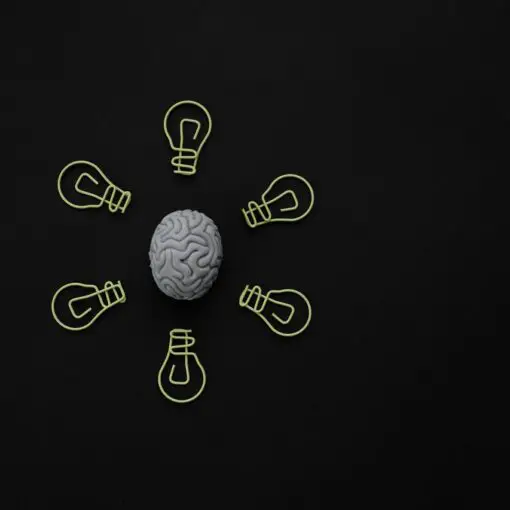Critical thinking is more important than ever in today’s fast-paced world.
Advanced strategies can help individuals not just in making decisions but also in evaluating complex problems and coming up with innovative solutions.
Mastering advanced critical thinking strategies ensures one can navigate challenges effectively and make well-informed decisions.

The six stages of critical thinking—ranging from Unreflective to Master thinkers—offer a framework for continuous improvement.
Each stage represents a deeper level of thought and reflection, enabling individuals to enhance their judgement and reasoning abilities.
By understanding and practicing these stages, one can develop a more nuanced approach to problem-solving and analysis.
Engaging in activities and exercises that promote critical thinking is essential.
Strategies like addressing a daily problem, using “wasted” time effectively, and internalizing intellectual standards help in cultivating a critical mindset.
Such practices not only improve decision-making but also enhance communication and presentation skills, crucial in both academic and professional contexts.
Key Takeaways
- Advanced critical thinking is key for effective decision-making.
- Six stages of critical thinking provide a framework for improvement.
- Regular practice and reflection enhance critical thinking skills.
Foundations of Critical Thinking

Critical Thinking involves clear, goal-oriented thinking that is self-directed and self-disciplined. It includes analyzing and evaluating information to improve one’s reasoning.
Defining Critical Thinking
Critical Thinking is the process of analyzing and evaluating thinking with the aim of improving it. It involves examining arguments, identifying biases, and challenging assumptions. Keeping an open mind is essential to this process.
Critical Thinking is not just about finding flaws in others’ thinking but also improving one’s own thinking skills.
It requires questioning beliefs and reflecting on different perspectives to reach a well-supported conclusion.
Core Principles of Critical Thought
Several core principles are central to Critical Thinking.
Logical reasoning is the foundation, ensuring that conclusions follow from premises. This requires understanding and applying formal rules of logic.
Questioning assumptions is another key principle. Critical thinkers must constantly challenge the credibility of their premises and the validity of their conclusions.
Important for Critical Thinking is maintaining universal intellectual standards, including clarity, accuracy, precision, relevance, depth, breadth, and logic.
Mastery in these areas leads to more reliable and valid reasoning.
Ultimately, Critical Thinking connects closely with effective problem-solving, allowing individuals to make well-informed decisions in their personal and professional lives. For additional resources, visit Stanford’s Critical Thinking entry and the Miniature Guide to Critical Thinking.
Cultivating a Critical Mindset
Cultivating a critical mindset involves recognizing and overcoming biases, growing into a reflective practitioner, and embracing intellectual humility. These elements help individuals become more skilled and practiced thinkers.
Overcoming Biases
Biases can cloud judgment and hinder clear thinking. To overcome these, individuals must first recognize their own biases.
This includes both conscious biases, like personal preferences, and unconscious biases, which are harder to identify.
Tools such as keeping a journal can aid in identifying patterns of biased thinking.
Recognizing biases involves self-awareness and a willingness to question one’s own beliefs.
Using structured frameworks helps to organize thinking and reduce the influence of biases.
By actively seeking out differing viewpoints, individuals can better challenge their thoughts and minimize biased decisions.
The Growth of a Reflective Practitioner
Becoming a reflective practitioner means continuously analyzing and improving one’s thought processes. Reflective practitioners regularly engage in self-reflection to assess their own thinking.
This practice is crucial for moving from being an unreflective thinker to a more advanced thinker.
They analyze past experiences to learn and grow, using reflection to identify what worked well and what did not.
Using techniques like guided questions can promote deeper reflection.
Practicing reflection helps one evolve through the stages of thinker development, from a beginning thinker to a master thinker.
Embracing Intellectual Humility
Intellectual humility involves recognizing the limits of one’s knowledge. It requires an openness to new ideas and a readiness to accept that one’s beliefs might be wrong.
Embracing intellectual humility is key to becoming a more effective critical thinker.
This trait allows individuals to learn from others and grow.
It helps in accepting constructive feedback and learning from mistakes.
An intellectually humble person is more likely to ask questions and seek deeper understanding.
This mindset fosters continuous learning and development as a critical thinker, progressing through levels from a challenged thinker to a practicing thinker.
Strategies for Enhanced Critical Thinking
Effective critical thinking involves specific techniques and tools to analyze information, reason logically, and embrace creative thought. Key strategies include questioning techniques, logic and reasoning tools, and integrating creativity into the thought process.
Questioning Techniques
Using questioning techniques is essential for developing critical thinking skills.
Open-ended questions encourage deeper analysis of topics. By asking “why” and “how,” individuals can explore underlying assumptions and evaluate arguments more thoroughly.
For example, Socratic questioning helps challenge ideas and stimulate reflective thinking.
Comparing different perspectives is another valuable approach, pushing individuals to consider various angles and consequences.
This deliberate questioning enables a fuller understanding and evaluation of complex issues.
Logic and Reasoning Tools
Logic and reasoning tools are fundamental in analyzing information and solving problems.
Tools like Venn diagrams help visualize relationships between concepts.
Deductive reasoning involves starting with a general statement and reaching a specific conclusion, while inductive reasoning works from specific observations to broader generalizations.
Both methods are useful for forming sound judgments.
Identifying logical fallacies, such as ad hominem or straw man arguments, ensures that reasoning is structurally sound and free of bias.
Integrating Creativity and Critical Thought
Integrating creativity with critical thinking fosters new ideas and innovative solutions.
Techniques such as brainstorming encourage the generation of diverse options without immediate judgment.
Mind mapping helps in connecting different concepts and visualizing thoughts.
Applying Bloom’s Taxonomy, educators can guide students through various cognitive levels, from simple recall to complex evaluation and creation.
Encouraging a playful mindset can also lead to more creative approaches to problem-solving, merging analytical skills with imaginative thinking.
Critical Analysis and Evaluation
Critical analysis and evaluation involve examining sources and evidence, conducting thorough research, and utilizing analytical frameworks to make informed judgments.
Examining Sources and Evidence
Examining sources and evidence is crucial for determining the reliability and credibility of information.
It includes looking at the author’s credentials, the publication date, and the publisher’s reputation.
An essential step is to analyze whether the source presents evidence in a transparent and verifiable manner.
Readers should check if the data is backed by statistics, studies, or expert opinions.
They should also be attentive to any biases or potential conflicts of interest that might affect the evaluation.
Primary sources are often more valuable due to their firsthand nature.
Evaluating the evidence’s context, such as the methods used to gather it, helps form a solid judgment about its validity.
Conducting Thorough Research
Thorough research requires digging deep into various sources to gather comprehensive information.
It is essential to use a mix of primary and secondary sources to obtain different perspectives.
Researching includes using libraries, digital databases, academic journals, and credible websites. This ensures that the analysis is grounded in well-rounded evidence.
Keeping track of references and organizing them systematically can aid in a more meticulous evaluation.
Moreover, avoiding plagiarism by citing sources properly and verifying facts through cross-referencing strengthens the research.
This rigorous approach helps in forming a balanced judgment and supports evidence-based conclusions.
Utilizing Analytical Frameworks
An analytical framework helps structure the analysis and evaluation of the information.
Common frameworks include SWOT (Strengths, Weaknesses, Opportunities, Threats) and PEST (Political, Economic, Social, Technological) analyses.
These tools help break down complex information into manageable sections.
For instance, SWOT can be used to evaluate a business strategy, while PEST can analyze market conditions.
Utilizing these frameworks allows for a systematic approach to analyzing the evidence, making it easier to spot patterns and linkages.
This methodical evaluation process aids in making more informed and reliable judgments.
Critical Thinking in Academic and Professional Settings
Critical thinking is essential in both academic and professional environments, where it fosters analytical skills and informed decision-making. Here, we will explore its importance in STEM fields, workplace decision-making, and integration into the educational curriculum.
Critical Thought in STEM and CTE
In STEM (Science, Technology, Engineering, Mathematics) and Career and Technical Education (CTE), critical thinking is pivotal.
Students in these fields often face complex problems that require logical analysis and innovative solutions.
Critical thinking helps them evaluate data, identify biases, and draw accurate conclusions.
For instance, in mathematics, students must assess the validity of proofs and solutions step-by-step.
In science, questioning hypotheses and conducting experiments require precise critical thinking skills.
Additionally, technology and engineering students must consider various design constraints and potential impacts of their projects.
Embedding critical thinking in CTE programs ensures that students are prepared for careers that demand high-level problem-solving abilities.
Decision Making in the Workplace
In a professional setting, critical thinking influences decision-making processes significantly.
Employees at all levels must evaluate information critically to make sound decisions.
This involves not only identifying problems but also systematically analyzing options and potential outcomes.
For instance, in business environments, managers may use critical thinking to assess market trends and make strategic decisions to enhance profitability.
Moreover, critical thinking aids in navigating workplace challenges and conflicts.
By considering multiple perspectives and anticipating the consequences of various actions, professionals can make more informed and ethical decisions.
This skill is indispensable in fields like healthcare, where decisions can significantly impact patient outcomes and safety.
Integrating Critical Thinking into Curriculum
Integrating critical thinking into the curriculum across various grade levels is crucial for developing students’ analytical skills early on.
Teachers can incorporate critical thinking exercises and discussions into lessons, encouraging students to question and analyze material rather than passively absorb it.
This can be achieved through problem-based learning, debates, and projects that require independent research and evaluation.
Online courses and modern educational technologies also play a role in fostering critical thinking.
Interactive lessons and digital resources provide opportunities for students to engage with content actively.
By aligning curricula with critical thinking standards, educators can better prepare students for college, careers, and the demands of an evolving economy.
Practical Exercises and Reflection
To enhance advanced critical thinking, practical exercises and reflection are crucial. These activities develop key cognitive skills, promote effective problem-solving, and encourage the application of these skills across different contexts.
Developing Problem-Solving Skills
Problem-solving skills are essential for critical thinking.
Problem-Based Learning (PBL) is a great method to develop these skills. PBL involves tackling real-world problems and finding solutions. This approach encourages active learning and engagement with the material.
Planning and organization are crucial here.
Breaking down the problem into smaller, manageable parts helps in understanding each aspect.
Brainstorming possible solutions as a group can lead to diverse and innovative ideas.
Evaluating these solutions critically to find the most effective one is vital for success.
Role-playing different scenarios allows individuals to practice their problem-solving skills in a simulated environment.
This helps in preparing for real-world challenges, fostering a proactive rather than reactive approach.
Engaging in Metacognitive Practices
Metacognitive practices involve thinking about one’s thinking processes. This helps in understanding how solutions are reached and can improve overall cognitive skills.
Reflective journaling is a practical exercise for metacognition. Writing down thoughts and reflections after tackling a problem can reveal insights into one’s thinking patterns and areas for improvement.
Creating checklists for evaluating one’s performance on various tasks can also be beneficial.
These checklists should include questions like “What strategies worked?”, “What could have been done better?” and “How can I improve next time?”.
By regularly engaging in these practices, one can develop a habit of self-evaluation and continuous improvement, which is key to advancing critical thinking.
Applying Skills Across Contexts
Applying critical thinking skills across different contexts ensures they are versatile and flexible. This involves taking the skills learned in one domain and using them in another.
For example, solving problems in a professional setting can be applied to personal life challenges.
Interdisciplinary projects are a useful exercise here. Working on projects that span different subjects or fields can show how critical thinking applies universally. This encourages creative solutions and broadens one’s perspective.
Case studies from various fields, such as healthcare, engineering, or social sciences, can also be analyzed to practice applying skills in different situations.
This helps in seeing the relevance and importance of critical thinking across diverse areas.
Advanced Critical Thinking Skills Development
Advanced critical thinking requires the enhancement of cognitive processes, mastering intellectual perseverance, and building upon complex thinking strategies. Each subtopic plays a crucial role in developing well-rounded and effective critical thinkers.
Cognitive Process Enhancement
Enhancing cognitive processes means improving how the brain processes information. It involves techniques that boost cognitive functions like memory, attention, and problem-solving.
Techniques:
- Mind Mapping: Visual tools to organize thoughts and ideas.
- Brain Training Games: Activities designed to improve memory and cognitive agility.
- Regular Reading: Enhances comprehension, speed, and critical thinking.
Benefits:
- Promotes clarity and precision in thought.
- Helps in drawing accurate and significant conclusions.
- Facilitates better-informed decisions.
Focusing on these techniques can improve the way individuals process information, leading to better critical thinking skills.
Mastering Intellectual Perseverance
Intellectual perseverance is the disciplined effort to continue solving complex problems, despite obstacles and challenges.
Strategies:
- Set Clear Goals: Helps maintain focus and direction.
- Reflect Regularly: Evaluate progress and strategies.
- Persistence in Problem-Solving: Encourages finding multiple solutions.
Benefits:
- Develops resilience and patience.
- Improves ability to adapt to new situations.
- Cultivates empathy by understanding different perspectives.
This perseverance builds a mindset that is crucial for tackling complex problems and reaching well-thought-out conclusions.
Building Upon Complex Thinking Strategies
Complex thinking strategies involve using higher-level thinking skills to analyze and solve sophisticated problems.
Techniques:
- SWOT Analysis: Evaluates Strengths, Weaknesses, Opportunities, and Threats in decision-making.
- Scenario Planning: Imagines different future scenarios and plans accordingly.
- Critical Discussion Groups: Engages in discussions to test and refine ideas.
Benefits:
- Enhances communication and argumentation skills.
- Provides clarity, accuracy, and significance to decision-making processes.
- Strengthens the ability to draw well-supported conclusions.
Using these strategies, thinkers can tackle more difficult problems and navigate complex situations with greater ease.
Assessing Outcomes and Measuring Success
Assessing the outcomes of advanced critical thinking strategies involves evaluating both personal and professional growth. It also requires utilizing specific tools to measure the progress in critical thinking skills.
Analyzing Impact on Personal and Professional Growth
Critical thinking often leads to better decision-making and problem-solving abilities, contributing significantly to personal and professional growth.
In professional settings, improved critical thinking can result in wiser business decisions and more innovative solutions.
For example, employees with strong critical thinking skills are valued for their ability to quickly analyze situations and make informed decisions, impacting overall success.
In personal growth, critical thinking enhances the ability to reflect on one’s own beliefs and actions. This self-analysis leads to continuous improvement and more thoughtful interactions with others.
It affects areas such as communication and adaptability, making individuals more effective in various situations.
Tools for Measuring Critical Thinking Progress
Several tools and methods can be utilized to measure progress in critical thinking.
Performance-based assessments, such as those found in international studies, are effective for evaluating this skill.
These assessments simulate real-world problems and require individuals to analyze, evaluate, and synthesize information.
Standardized tests that focus on critical thinking components, such as identifying and interpreting evidence, also offer insights into improvement.
Observational techniques, where instructors assess students’ critical thinking during discussions and tasks, are useful in educational environments.
Utilizing rubrics that clearly define expected outcomes and success criteria can help measure progress.
For example, educators and employers can use rubrics to assess how well individuals apply critical thinking in specific scenarios, ensuring that assessments are structured and objective.
Critical Thinking in a Changing World
In a rapidly evolving global landscape, critical thinking is crucial for navigating information and addressing complex challenges. This involves accessing reliable content, maintaining open-mindedness, and engaging in meaningful conversations.
The digital age has brought an overwhelming flow of information. People must determine what is true and relevant.
They need tools and skills to evaluate content critically.
Depth is essential. Surface-level analysis can lead to misinformation.
To gauge truth, one should check multiple sources. Access to diverse opinions and perspectives is key.
The rise of fake news and misinformation online underscores this need.
Fact-checking websites and reliable news outlets become invaluable.
Open-mindedness is also crucial. Approaching information with an open mind allows for thorough evaluation.
Moreover, language plays a significant role.
Clear and concise language helps in understanding complex topics.
Critical thinkers must be adept at decoding jargon and identifying biases.
This way, they can sift through vast amounts of digital content effectively.
Responding to Global Challenges
Global challenges like the coronavirus pandemic highlight the importance of critical thinking. Responding effectively requires accurate information and the ability to predict outcomes based on available data.
Content from credible health organizations provides a basis for informed decisions.
Evaluating this information critically ensures preparedness and appropriate responses.
Open-mindedness is again crucial.
Different countries may tackle global issues differently. Learning from varied approaches can lead to better outcomes.
Relevance of the information plays a big role.
During critical times, such as a pandemic, swift access to reliable and relevant data can save lives.
Being able to discern which information is pertinent to the situation at hand is vital.
Conversations around global issues require a high level of critical engagement.
Discussions should focus on facts rather than emotions.
Engaging with others in thoughtful dialogue helps to broaden perspectives and find effective solutions.
Frequently Asked Questions
This section addresses advanced critical thinking strategies by focusing on their key components, application to complex problems, successful examples, step-by-step skill enhancement, integration of the 5 W’s, and the role of the 3 C’s in development.
What are the key components of advanced critical thinking strategies in an educational setting?
Advanced critical thinking involves deep analysis, evaluation of evidence, and synthesis of information.
Critical thinkers in education use questioning techniques, promote intellectual curiosity, and encourage debate.
These strategies help students to not only absorb information but also to understand and apply it effectively.
How can critical thinking strategies be effectively applied to complex problem solving?
To tackle complex problems, critical thinking strategies involve breaking down issues into smaller parts, evaluating information sources, and considering multiple perspectives.
These methods help students weigh pros and cons, identify logical fallacies, and make informed decisions.
The overall goal is to develop a systematic approach to solving intricate problems.
What examples demonstrate the successful application of advanced critical thinking strategies?
An example can be seen in project-based learning where students use research, critical analysis, and collaborative discussion to tackle real-world problems.
Another instance is in STEM education, where learners apply scientific thinking to form hypotheses, conduct experiments, and draw evidence-based conclusions.
Can you outline a step-by-step approach to enhancing critical thinking skills among students?
-
Encourage curiosity: Foster an environment where asking questions is welcomed.
-
Teach analysis: Show students how to break down information and assess its validity.
-
Promote evaluation: Guide them in judging the reliability of sources and arguments.
-
Practice synthesis: Have students combine information to form cohesive ideas and solutions.
How does the integration of the 5 W’s enhance critical thinking in advanced learning environments?
Integrating the 5 W’s (Who, What, When, Where, Why) helps students explore all dimensions of a topic.
This technique ensures a comprehensive understanding by encouraging learners to ask detailed questions.
For example, understanding “Why” something happens can often uncover deeper insights into causes and effects.
What role do the 3 C’s play in the development of critical thinking competencies?
The 3 C’s—Clarity, Consistency, and Coherence—are crucial for developing critical thinking skills.
Clarity involves being precise and avoiding ambiguities. Meanwhile, consistency means maintaining logical and factual alignment in arguments. Lastly, coherence entails connecting ideas in a rational way, ensuring that the overall message is understandable and well-structured.
These elements are essential for effective critical thinking.
Critical Thinking Is About Asking Better Questions
100 Questions that Build Your Team’s Critical Thinking Skills





